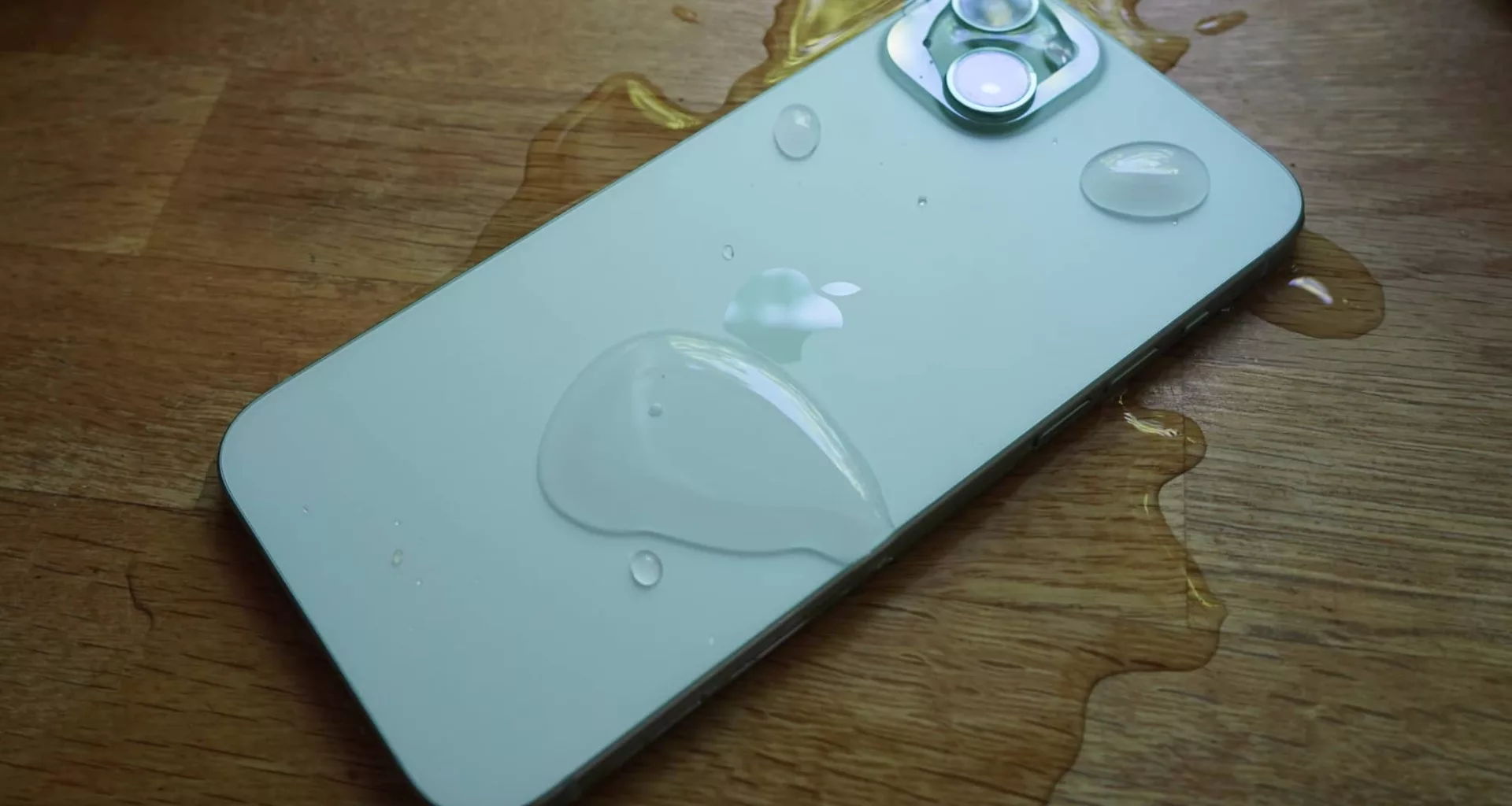Quick review
The good
The not-so-good
Spending extra on the Pro Max isn’t for everyone, so what can spending less on the big iPhone get you? We’re taking a look at the iPhone 15 Plus. Is it right for you?
It’s 2023 and the world has yet another list of iPhones to choose from, a little like how Goldilocks, except with tech.
Honestly, we’re not sure Goldilocks had it this tough. All she had to do was choose the mildly warm bowl of porridge and the comfiest bed. Picking a phone these days can seem much more varied and a whole lot more complicated. After all, you’re playing with big spends and feature sets designed to last you a good two or three years.
Spend the most and you’ll definitely get the best feature set on offer, even if it can feel a little out of date the following year. That’s the fun of technology and dealing with Moore’s Law. Meanwhile, spend the least and you’ll also probably want to upgrade faster, possibly because of the jealousy in seeing the newer tech come out.
Much like Goldilocks, we’re often looking for a phone that delivers a feature set and price that’s “just right”, and sometimes we’re lucky enough to spy just the one.
This year’s iPhone 15 Plus could well be that model, delivering much of the feature set of the big high-end iPhone including the same sizeable battery without the same sizeable price.
Is the iPhone 15 Plus enough of an iPhone to keep you going? Is it just right?
Design
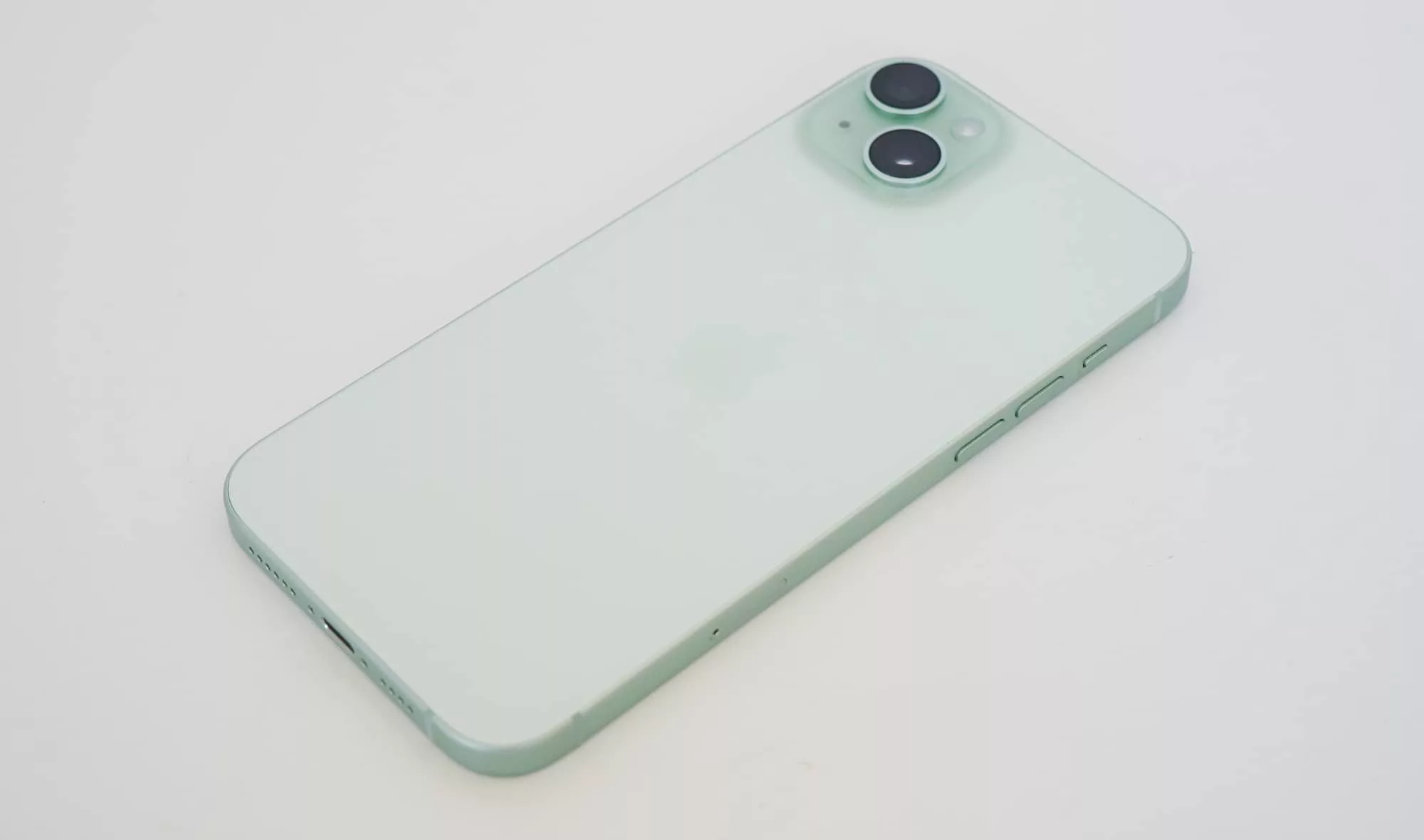
It may well brandish a new number on the box, but there isn’t much new to report on the design, with the iPhone 15 Plus more or less being the same look and feel as the iPhone 14 Plus.
Comparing them side-by-side, the iPhone 15 Plus is a dead ringer for the iPhone 14 Plus we checked out earlier this year. That shouldn’t come as much of a surprise given the similar dimensions, but there are minor touches.
Much like the slight changes on the iPhone 15 Pro Max compared to its previous model, the flat edges are slightly softer at the very edge, as Apple refines its flat frame look just that little bit. It’s difficult to notice until it’s pointed out, but once you see it, you can’t unsee it.
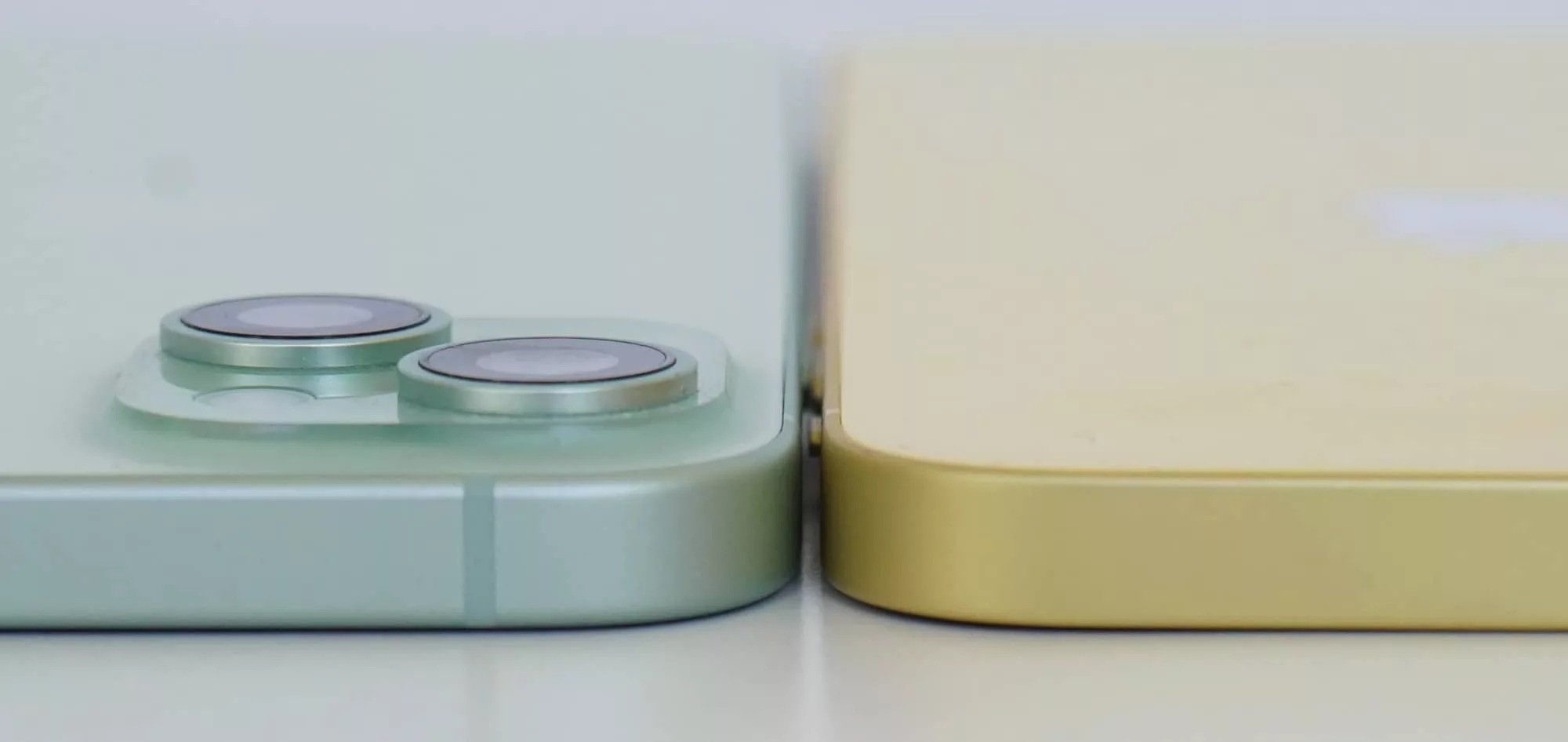
Features
While the differences on the outside between Plus models aren’t easy to see, there are obvious difference on the inside.
For starters, Apple has moved chips in this generation, and instead of leaving the same chip from the iPhone 13 in the iPhone 14 Plus, you’ll get the chip out of the iPhone 14 Pro: the Apple A16 Bionic.
Yes, it may as well be the high-end phone from the year before, and that’s totally fine by us. It’s a great piece of hardware, capable of some high-end performance that should keep you going for years, giving you a six-core CPU and a five-core graphics chip alongside those 16 cores of Neural Engine machine learning capabilities.
Like the previous standard iPhone models, there are only two cameras on the back here, but unlike those models, they’ll behave like three. That’s thanks to Apple also bringing a new camera system, with a 48 megapixel camera again like last year’s Pro line-up.
It’s not exactly the same — you won’t get RAW support or the ability to capture macros — but you’ll find support for 48 megapixel (mp) images if you choose to, and a slight improvement to focal lengths on the iPhone 15 Plus, supporting 0.5X on the 12mp F2.4 ultra-wide, 1X on the 48mp F1.6 standard wide, and a slightly closer 2X that crops the 48 megapixel camera down to 12mp at F1.6, which is nice, too.
Support for all the regular Apple camera fix-ins is expected, with Deep Fusion, the Photonic Engine, and portrait control with lighting effects, plus a newbie for the year: the ability to turn regular images into portrait shots after you’ve captured them.
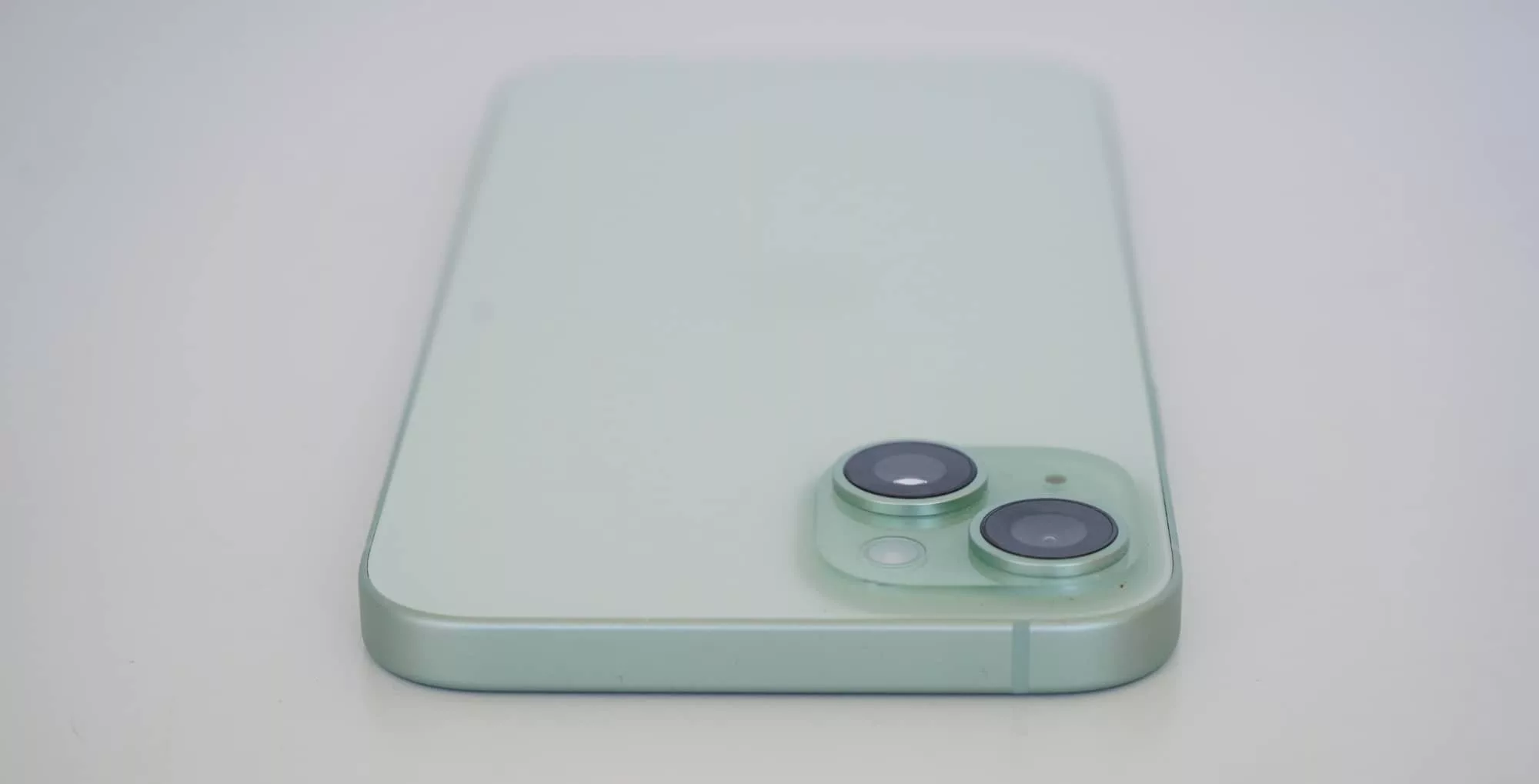
You’ll also find 4K video support here with Dolby Vision HDR, both on the back cameras and the front, with that last one being the same 12 megapixel auto-focus model you might have heard about on the iPhone 14 Plus.
There’s also WiFi 6, Bluetooth 5.3, 5G, GPS, NFC for Apple Pay, and a new and improved second-gen Ultra Wideband chip for finding things, with the main connection change being at the bottom. Say goodbye to Lightning, because Apple has moved onto the standard of USB Type C, also known as USB-C. It’s set to a maximum of USB 2 speeds on the iPhone 15 Plus, but at least it’s a standard.
USB-C charging is joined by wireless Qi charging as it has been in prior models, which also sees the iPhone 15 Plus working with MagSafe, should you have one of the many MagSafe charging stands.
The battery hasn’t changed and neither has the water resistance rating, which is still IP68, though the weight has, with the 201 gram iPhone 15 Plus shaving two grams from the 203g iPhone 14 Plus.
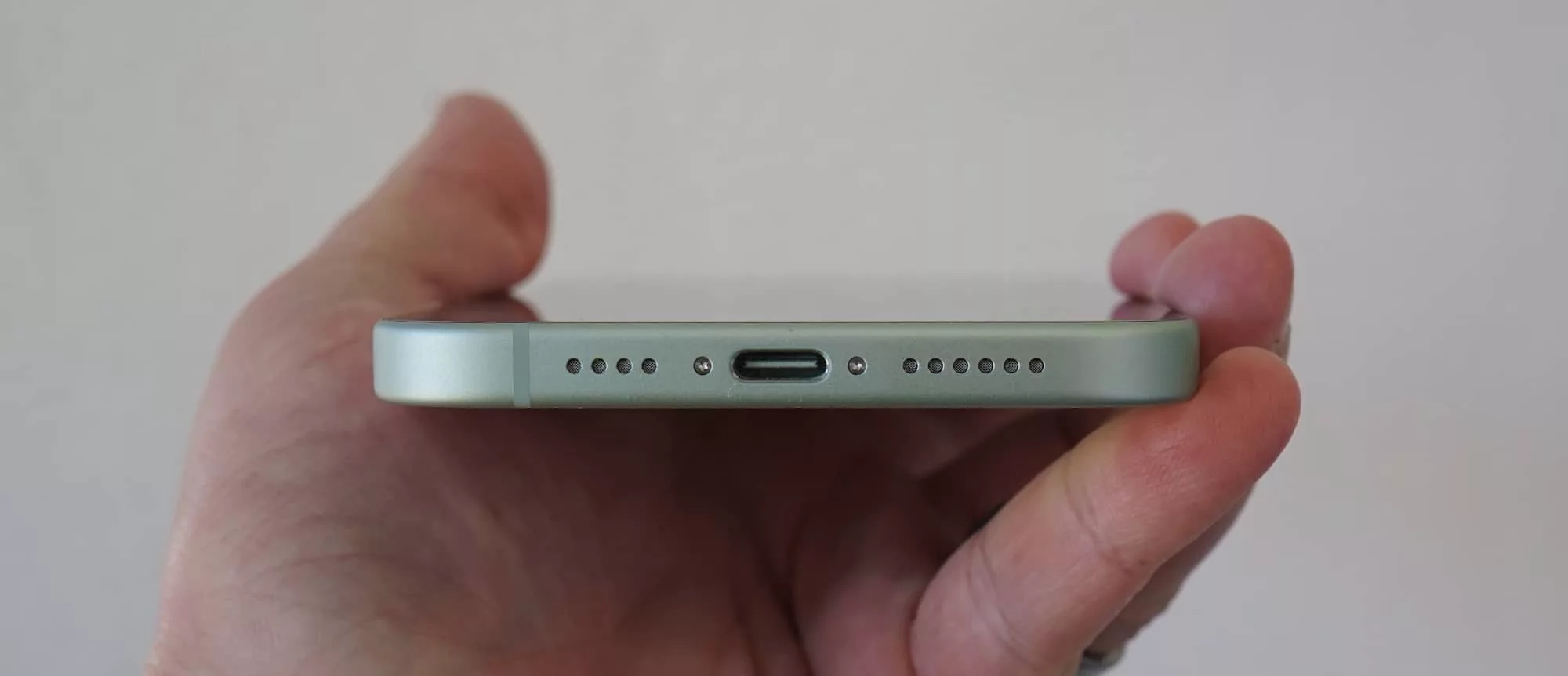
In-use
Apple might have changed some of the hardware, but using the iPhone 15 Plus is as easy as using any other iPhone.
Depending on what you’re upgrading from (or just starting out fresh), you shouldn’t need to relearn anything, even with the odd change iOS 17 might bring in.
Map your face as the login system using Face ID in the all two seconds that it takes, and then you can quickly glance at the phone to skip punching in a PIN code.
Open the phone up and handle it with swiping, typing, and all the gestures you may be used to from previous generations, with the only major changes in usability being the Dynamic Island display brought over from the iPhone 14 Pro Max last year.
Display
Easily one of the most important changes in the standard iPhone this year, the screen is being switched over to one of those mostly all-screen options similar to what the iPhone 14 Pro and 14 Pro Max launched with last year.
Rather than return the shelf and notch we’ve seen since the iPhone X — which has been gradually getting smaller and smaller — the iPhone 15 instead uses the Dynamic Island, a sort of hole cut out of the screen left for the camera and Face ID technology, which Apple has creative turned into a bit of software that can expand and shrink based in what you’re doing with the phone at the time.
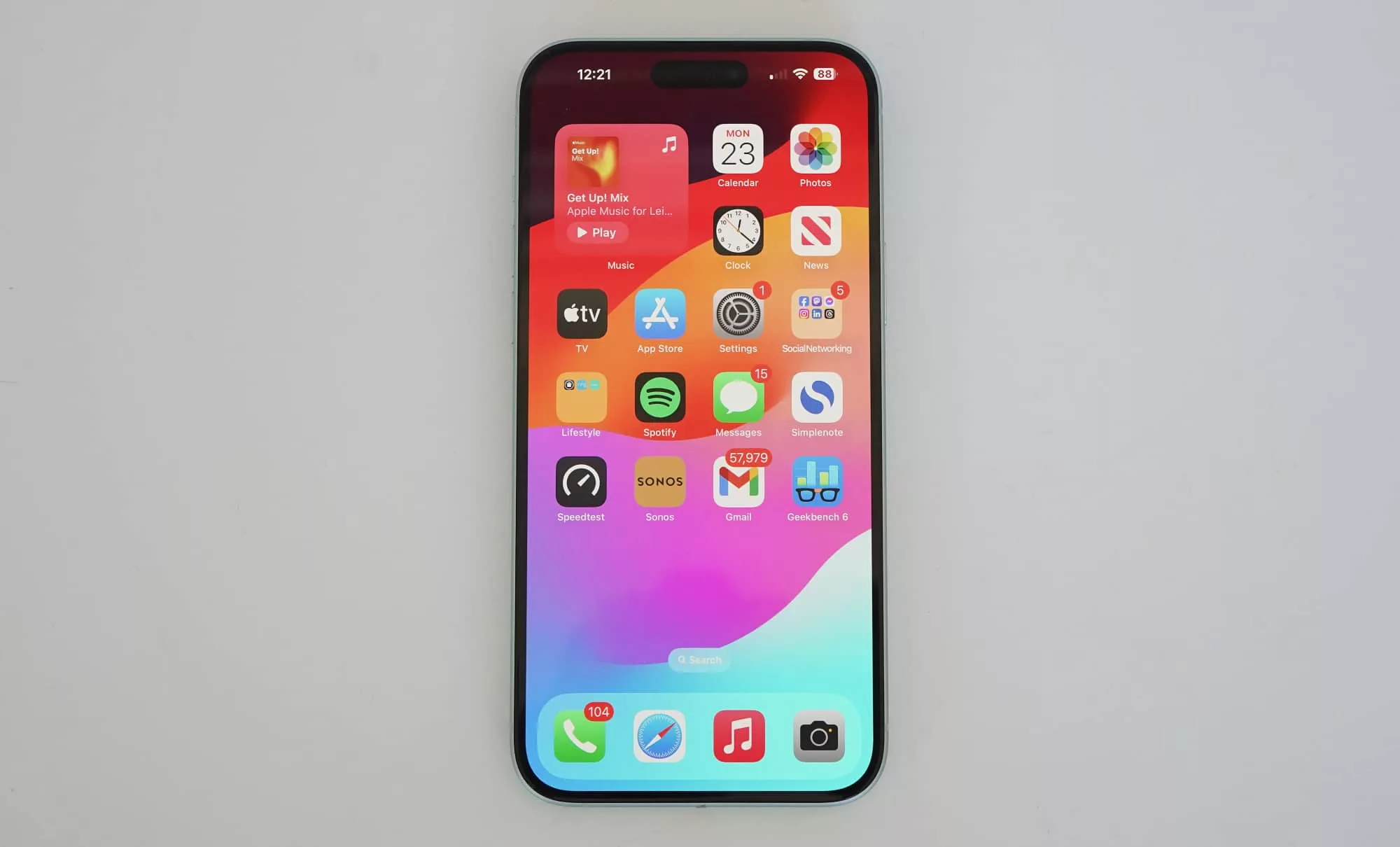
It’s mostly a bit of software trickery, as the island never really expands or changes shape, but it’s one that helps make the phone feel like it uses the hole left for the camera tech more effectively than just simply having the cut-out in the first place.
Not only that, but it delivers a way to use the phone and multitask better, as the island becomes a controller for the apps loading in there. For instance, listening to music will see the album art and a tiny visualisation of the sound load in place. Pressing that album art takes you to your music player.
That’s just one example of the Dynamic Island in action, and there are others, especially since it’s a feature app developers can take advantage of.
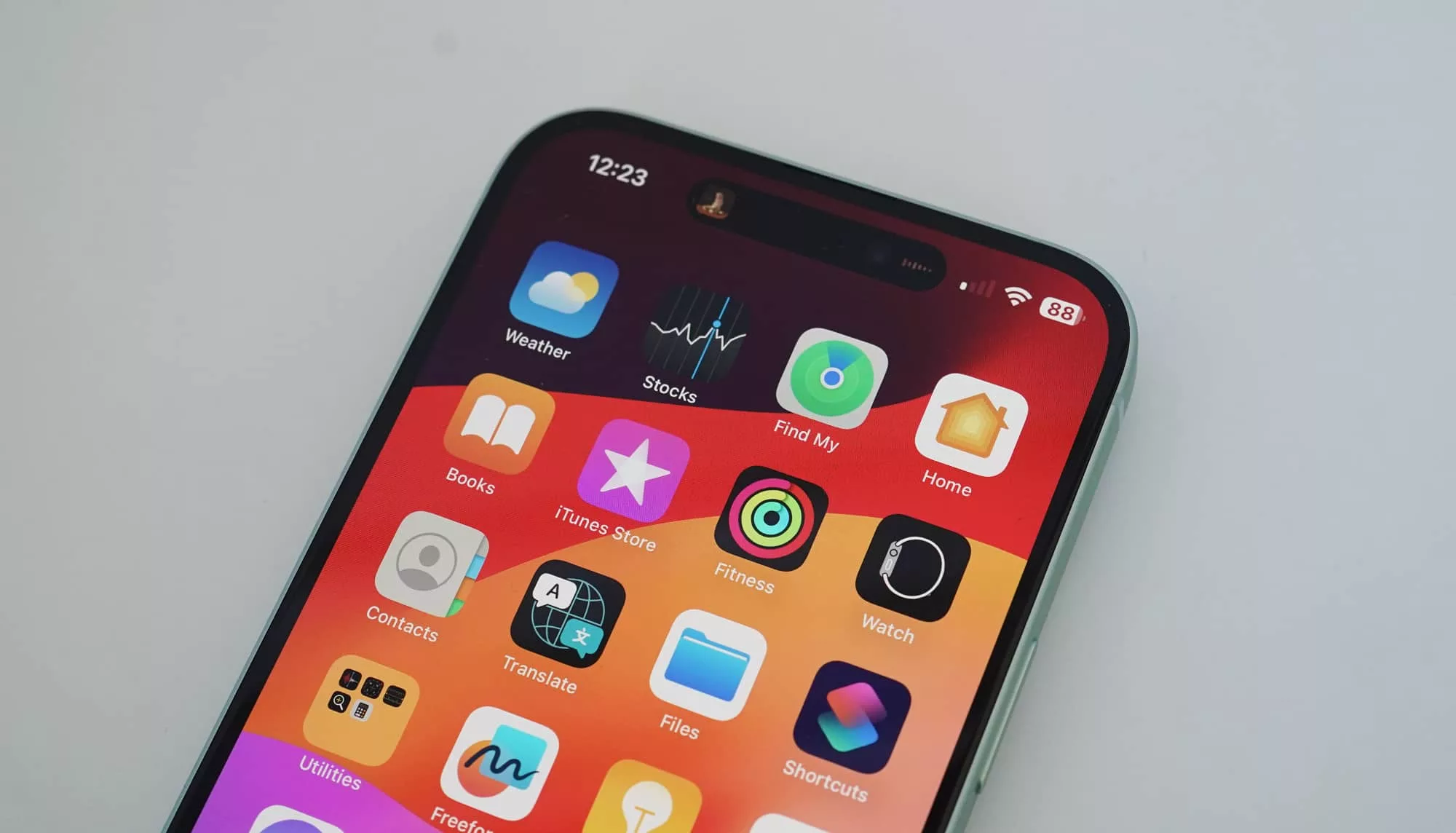
Outside of the Dynamic Island, Apple hasn’t changed much, and you won’t get the other fun display features found on the Pro and Pro Max models, specifically the ProMotion variable display refresh rate tech that can slow the screen to 1Hz and show an always-on phone display.
But the screen size and much of the tech are the same, with the 6.7 inch iPhone 14 Pro Max screen more or less shared with the 6.7 inch iPhone 15 Pro Max, and indeed even the iPhone 15 Plus, which works with Apple’s white-balancing True Tone, the P3 colour gamut, supports HDR, and a resolution of 2796×1290 on an OLED screen.
If you didn’t care about the always-on and ProMotion refresh rate tech, the screen on the iPhone 15 Plus may as well be the screen on the more expensive iPhone 15 Pro Max. Kinda sorta.
Performance
But the performance is different, thanks in part to a chip difference. Much like how the iPhone 14 Plus didn’t get the chip out of the iPhone 14 Pro range, the difference in processors is a generation once again.
Fortunately, the generation isn’t dramatic, and owners of the sans-Pro models will see the chip from the Pro 14 models, namely the A16 Bionic.
That means you can expect similar performance on the 15 Plus that you’d get on the 14 Pro Max and then some, giving phone owners a new bump in processing capability, and clearly giving them the spec and speed to run apps and games for years to come.

You’ll miss out on the new console quality games Apple has in store for the A17 chip, something only found on this year’s “Pro” range, but outside of that, the performance is solid, as noted in our benchmarks above.
Granted, there’s a difference in operating systems from when we captured the benchmark of the 14 Pro Max and the 15 Plus, but if you’re upgrading from pretty much any old iPhone, you’re going to see plenty to work with in apps and games aplenty.
In fact, comparing the iPhone 15 Plus to previous standard iPhone models (including the iPhone 14 Plus) reveals the bump from the A16 really delivers a decent amount of speed.

The high-end performance sees a similar vibe for 5G which may be reliant on your location and telco, but seems to serve itself well.
Tested in Sydney, Australia on the Telstra 5G network by way of Mate, we found speeds as high as 190Mbps, shortly before Mate capped our speeds as part of its bandwidth limiting caveat.
Your speeds will vary based on a lot of factors, but Apple’s use of sub-6 5G tech on the Australian iPhone 15 Plus means there’s plenty of speed on offer if you need it and don’t mind paying your telco for it.

Camera
The changes don’t just stop at the chip or screen, though both of those certainly matter. Alongside the capable chip and the shelf-less screen is a camera straight out of last year’s Pro model, kinda sorta.
You won’t get the 3X telephoto camera reserve for folks who spend more, but you will find a 48 megapixel sensor in a different camera module, which his a big deal for two reasons:
- It offers a slightly faster aperture for low-light (F1.6), and
- The 48 megapixel sensor can effectively give your iPhone an extra 2X camera.
For the most part, the idea of the two cameras in the iPhone 15 Plus isn’t dramatically different from the way Apple’s standard models have been for a while: one standard wide camera and one ultra-wide, with that last one working at 12 megapixels.

What makes the new 15 so interesting is your 48 megapixel camera can crop down the image to a part of the sensor and let you capture at 2X. It means getting slightly closer in regular images and portraits, handy when you consider that for a long time, Apple included a separate 2X camera in its Pro models.
That’s what you got in the Phone 11 Pro Max and what you get in the iPhone 12 Pro.
While you’re not getting a dedicated 2X camera here, you are getting something that ostensibly works as one, and that expands your image taking that little bit more.
And the results speak for themselves. Images are sharp and vibrant, details are clear, and the pictures look great in most situations.
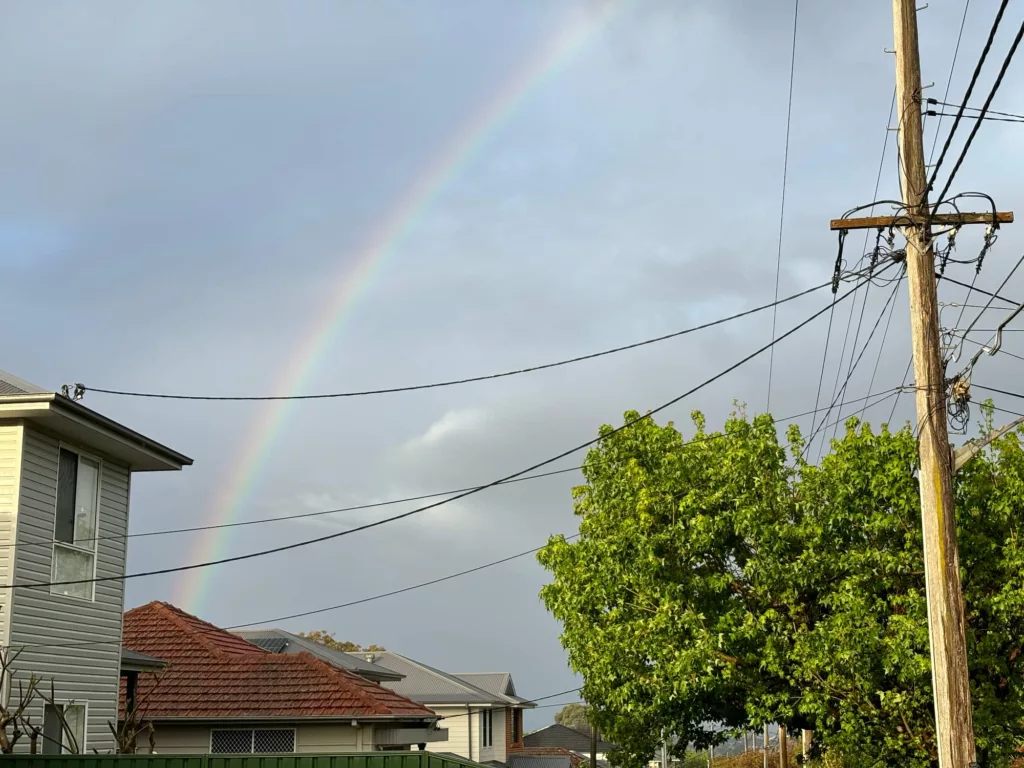


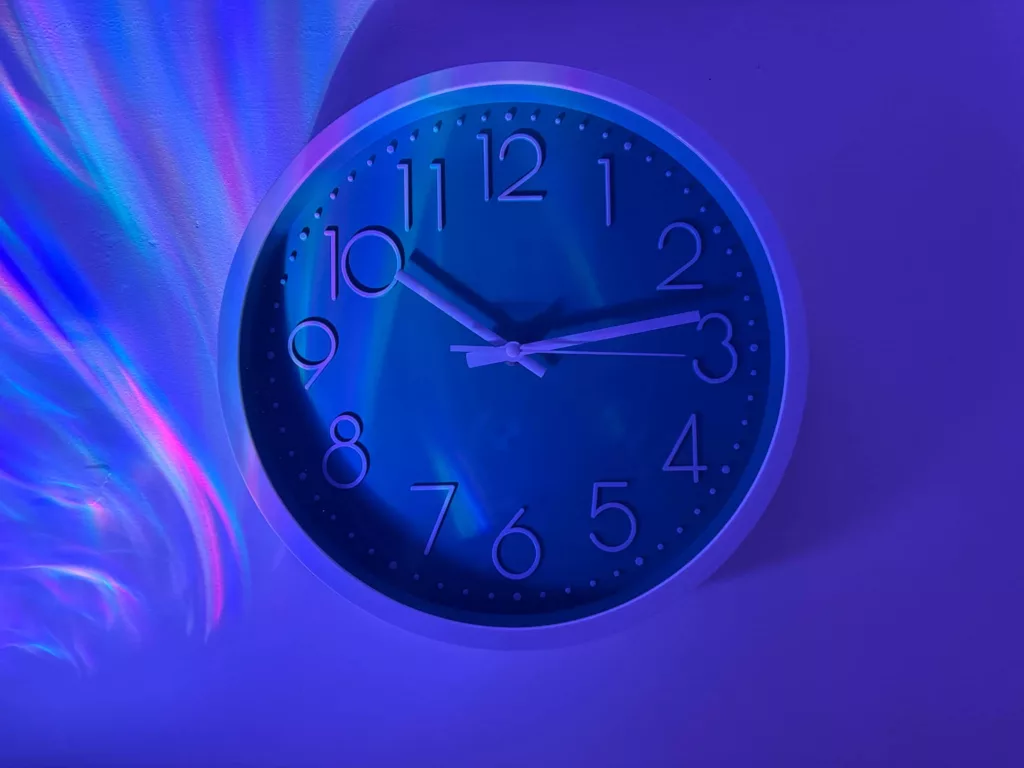
You’ll miss out on the closeness that the 5X telephoto affords you in the more expensive iPhone 15 Pro Max, as well as support for ProRAW, up close macro images, and Apple’s ProRes video capability, but you’ll still see 4K video capture for that last one if you don’t care.
Even the front-facing camera is shared, with the 12 megapixel autofocus camera appearing on the 15 Plus the same as the one appearing on the 15 Pro Max. It gets nice shots provided you look nice, and it even does one of the neat software tricks we love in this year’s iPhone: portrait shots after the fact.
Easily one of the coolest features, Apple appears to be using its foreground picking tech in the operating system to let you turn any picture that wasn’t a portrait into a portrait shot, complete with the aperture changing and studio lighting controls.
It’s a handy addition, and means you can quickly separate people from the background in a really visually striking way, making images pop and look that much better than simply as they were shot, all after the fact.
Much like how Google’s AI stuff gives you playful ways to make your images pop on the Pixel range, so too does Apple’s tech with post-processed portraits. It’s a handy inclusion you may find yourself using more often.

Battery
Over to the battery, and while the change to the A16 Bionic isn’t going to make a huge difference compared to where it was on the A15 in the iPhone 14 Plus, the result is still solid, at least compared to other big phones.
As it is, the “standard” for a big phone these days is typically a day and a bit, making it through a full 24 hours with a little more left in the tank if you need it, often stretching to 30 to 32. Use the phone more aggressively and net more than four hours of screen time, and you’ll likely need a charge.
That’s what it was like on the iPhone 14 Plus, and again, it’s also what the battery is like on the iPhone 15 Plus with it. Testing the handset over a week, we found a full day and a bit was easily possible, typically maxing at 30 hours in our tests.
Thankfully, Apple’s switch to the now international standard that is USB Type C means recharging your phone shouldn’t be difficult at all.
Simply find a cable that any other phone, tablet, laptop, headphone, or speaker uses. Some monitors use it, too. Seriously, you don’t have to go scrambling to find anything special anymore, and can just ask “does someone have a new USB cable?”

Value
That’s certainly the case with the entire new iPhone range this year including the iPhone 15 Pro Max. One of the differences, however, is the price, with the iPhone 15 Plus approach a slightly economical price point.
Starting at $1699 in Australia, the iPhone 15 Plus is downright wallet-friendly, and feels like much better value than any iPhone has been for a few generations.
While you’re missing out on the telephoto camera, you are getting much of what made the iPhone 14 Pro Max so exciting last year, except in a phone made for this year that doesn’t cost quite as much.
That is a huge win for anyone who wants a big phone without quite as big a price tag.
What needs work?
And between that value and the tech upgrades, we think the iPhone 15 Plus is a solid package, delivering the big iPhone promise without the same big iPhone price tag the Pro Max model commands.
There’s a good $350 difference between the two when you compared apples with apples, mainly because the entry-level iPhone 15 Plus has 128GB RAM and upping it to 256GB costs $1849, compared to the $2199 cost of the 256GB iPhone 15 Pro Max.
However, we do think Apple should have sweetened the deal just a little bit more and included the Always-On ProMotion tech in the Plus.

We get that the extra camera on the 15 Pro Max is worth the price jump, as is the more durable titanium frame, but the screen could have easily been the same technology as the more expensive model.
Screens with higher refresh rates are becoming consistent across the industry at lower price points, and for where the iPhone 15 Plus is positioned, it would have made much more sense to us to not make it one of the premium features the more expensive iPhone offered.

Final thoughts (TLDR)
Despite this, we still really like the new 15 Plus.
It might seem crazy, but the iPhone 15 Plus is one of the most exciting and intriguing iPhones we’ve reviewed in recent years. The technology on board isn’t dramatically exciting, because we’ve seen it before: the Dynamic Island is from last year, as is the 48 megapixel camera, and Type C USB charging is just the normal thing now.
Really, the iPhone 15 Plus isn’t about delivering a super new iPhone. It’s about delivering a brilliant little package for all. And that’s what this is.
The iPhone 15 Plus is enough for everyone. It’s more than enough phone for the next few years with updates you will use.
That’s an important point, too. Apple has found the middle ground between its high-end phones and the common ground, giving more than enough battery life, camera prowess, and performance in a design that still stands out as beautiful.
Sure, it lacks the titanium strength and extra optics of the Pro Max model, and you won’t be able to play the same console-quality games that need the A17 chip, but Apple Arcade still offers excellent games outside of it, so you may not care.
What the iPhone 15 Plus offers is an iPhone for all. We haven’t been this impressed with the standard model since maybe the iPhone XR. It’s just a great phone for anyone. Recommended.



